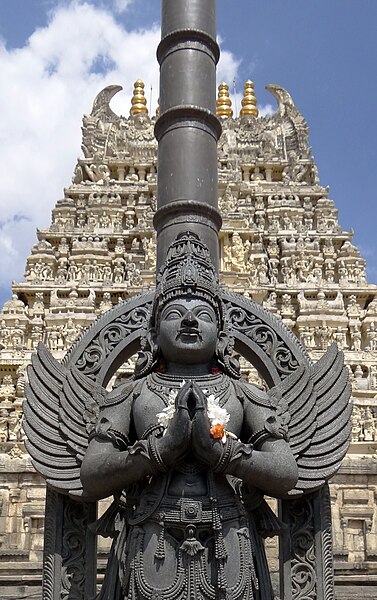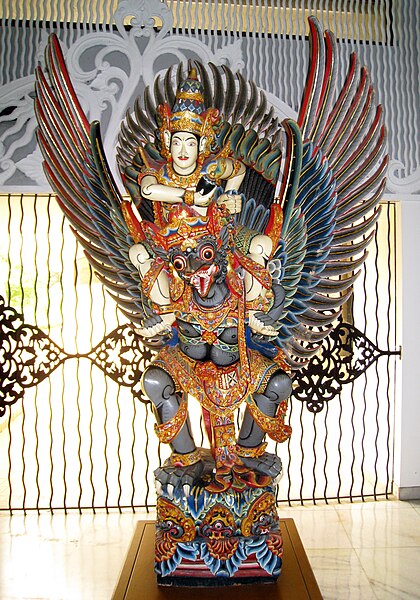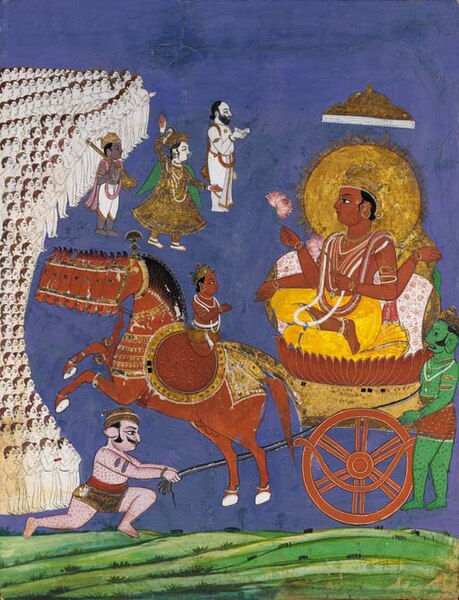Garuda is a Hindu deity who is primarily depicted as the mount (vahana) of the Hindu god Vishnu. This divine creature is mentioned in the Hindu, Buddhist and Jain faiths. Garuda is also the half-brother of the Devas, Gandharvas, Daityas, Danavas, Nāgas, Vanara and Yakshas. He is the son of the sage Kashyapa and Vinata. He is the younger brother of Aruna, the charioteer of the Sun. Garuda is mentioned in several other texts such as the Puranas and the Vedas.
Garuda secures Amrita by defeating the Daitya
Relief depicting a portable Garuda pillar, one of the oldest images of Garuda, Bharhut, 100 BCE.
Garuda is found in Vishnu temples; Above: in Belur, India.
Balinese wooden statue of Vishnu riding Garuda, Purna Bhakti Pertiwi Museum, Jakarta, Indonesia.
Vahana or vahanam denotes the being, typically an animal or mythical entity, a particular Hindu deity is said to use as a vehicle. In this capacity, the vahana is often called the deity's "mount". Upon the partnership between the deity and his vahana is woven much iconography and Hindu theology. Deities are often depicted riding the vahana. Other times, the vahana is depicted at the deity's side or symbolically represented as a divine attribute. The vahana may be considered an accoutrement of the deity: though the vahana may act independently, they are still functionally emblematic or even syntagmatic of their "rider". The deity may be seen sitting or standing on the vahana. They may be sitting on a small platform, or riding on a saddle or bareback.
The eight Matrikas riding different vahanas like (top row, second from left to right) Garuda, a peacock, Nandi bull, a hamsa (goose/swan); (bottom row, from left) buffalo, elephant and lion
Image: Thajavur Ganesha
Image: Suryatanjore
Image: Garuda by Hyougushi in Delhi







